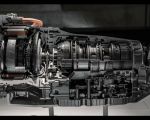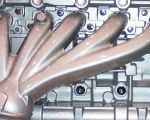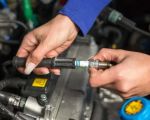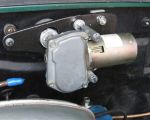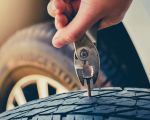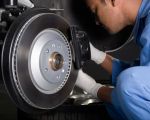How to Fix a Car with Loose Steering: A Step-by-Step Guide
Dealing with a car that has loose steering can be one of the most unnerving experiences for a driver. Loose steering not only makes driving less enjoyable, but it can also be dangerous if not addressed in time. Fortunately, this is a common issue that can be fixed with the right knowledge and tools. In this article, I’ll walk you through the process of diagnosing and fixing loose steering on your vehicle, from identifying the cause to the necessary repairs.
Before we begin, it’s essential to note that loose steering can be caused by several factors. In most cases, it stems from a problem with the steering components, suspension system, or the steering column. While some of these issues can be tackled by a DIY mechanic, others might require professional attention. If you’re not comfortable with the repairs, it’s always best to consult with a certified mechanic. With that said, let’s dive into the steps you need to take to fix a car with loose steering.
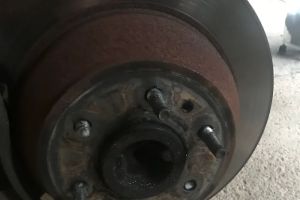
Beckwith's Automotive Services Center
2450 N Ridge Rd, Painesville, OH 44077, USA
1. Identifying the Cause of Loose Steering
The first thing you need to do when you notice your car’s steering feels loose is to determine the underlying cause. Understanding the cause can help you decide whether it’s a simple fix or something more complex that requires professional attention.
Here are some common causes of loose steering:
- Worn Steering Components: The steering system includes several components that work together to help you control the direction of the vehicle. Over time, parts such as the steering rack, tie rods, and ball joints can wear out, causing the steering to feel loose.
- Loose or Broken Power Steering Belts: If your car has a power steering system, a loose or broken belt can cause poor steering performance. Without proper tension, the power steering pump can’t function efficiently, leading to steering difficulties.
- Low Power Steering Fluid: Power steering systems rely on hydraulic fluid to function smoothly. If the fluid level is too low or there’s a leak, steering can become harder or more imprecise, leading to a loose feeling.
- Suspension Issues: The suspension system plays a significant role in maintaining vehicle stability. If the suspension components, such as the shock absorbers or struts, are worn out, it can affect the steering response.
- Misaligned Wheels: Wheel alignment issues can lead to uneven tire wear and make the steering feel loose or misdirected. If your wheels aren’t properly aligned, it can cause steering problems.
Once you have a good idea of what might be causing the issue, you can proceed with the necessary repairs. Now, let’s look at how to fix these problems one by one.

bp
200 S Oyster Bay Rd, Syosset, NY 11791, USA
2. Fixing Worn Steering Components
If you’ve identified worn steering components, you’ll need to replace them. The steering rack, tie rods, and ball joints are essential parts of the steering system, and if they become worn or damaged, they can cause the steering to feel loose. Here’s how to replace them:
Tools Needed: Jack, jack stands, socket set, wrench, replacement steering components.
Steps:
- Lift the front of the car using a jack and secure it with jack stands for safety.
- Remove the wheels to access the steering components.
- Inspect the steering rack, tie rods, and ball joints. Look for any signs of wear or damage, such as excessive play or broken parts.
- Use a wrench to disconnect the tie rods from the steering rack, then remove the old components.
- Install the new components by reversing the disassembly steps. Tighten all fasteners to the manufacturer’s specifications.
- Once the new components are in place, reattach the wheels, lower the car, and test the steering for any improvements.
Worn steering components can significantly affect the handling of your vehicle, so replacing them as soon as possible is essential for your safety.
3. Replacing Power Steering Belts
If the problem lies with the power steering belts, you can easily replace them yourself if you have the right tools. Power steering belts are responsible for driving the power steering pump, and when they wear out, they can cause steering issues.
Tools Needed: Socket set, power steering belt, pulley tool (if needed).
Steps:
- Locate the power steering belt in the engine bay. It should be easy to spot, as it’s connected to the power steering pump.
- Use a wrench or socket to loosen the tensioner pulley and remove the old belt.
- Install the new belt, ensuring it is properly aligned with the pulleys.
- Use the tensioner pulley to tighten the belt and ensure it has the correct tension.
- Start the car and test the steering to make sure it’s functioning properly.
Replacing the power steering belt will help restore the proper function of the steering system, particularly if the steering feels heavy or inconsistent.
4. Checking and Refilling Power Steering Fluid
If your steering feels loose or the steering wheel is difficult to turn, low or contaminated power steering fluid could be the culprit. It’s easy to check and refill the fluid yourself.
Tools Needed: Power steering fluid, funnel, gloves.
Steps:
- Locate the power steering fluid reservoir under the hood. Check the level by reading the fluid dipstick or the markings on the side of the reservoir.
- If the fluid is low, add the recommended type of power steering fluid using a funnel to avoid spills.
- Check for any leaks in the system, especially around the hoses or reservoir. If you notice any, repair or replace the affected parts.
- Start the car and turn the steering wheel from side to side to circulate the fluid. Check the steering feel and ensure the issue is resolved.
Maintaining the correct fluid level is essential for smooth steering, so be sure to check the fluid regularly.
5. Addressing Suspension Issues
If the suspension system is the source of the loose steering, it might be necessary to replace components such as the shocks or struts. A worn suspension can make your car feel unstable, which translates to poor steering control.
Tools Needed: Jack, jack stands, socket set, replacement suspension parts.
Steps:
- Lift the car using a jack and secure it with jack stands.
- Inspect the suspension components for signs of wear, such as leaking shocks or worn-out bushings.
- Remove the worn suspension components and replace them with new parts.
- Reassemble the suspension system and lower the vehicle.
- Test the steering by driving the car and checking for improvements in stability and responsiveness.
Fixing suspension issues can be more complex, so if you’re unsure of what you’re doing, it’s a good idea to consult with a mechanic to avoid any further complications.
6. Aligning the Wheels
If your car’s wheels are misaligned, this can also contribute to loose steering. Misalignment can cause uneven tire wear, which in turn affects how the car handles and steers.
Tools Needed: Wheel alignment equipment (typically done by a professional mechanic).
Steps:
- Drive your car to a professional alignment shop or use a wheel alignment tool if you have access to one.
- The technician will adjust the camber, caster, and toe angles to ensure the wheels are aligned correctly.
- Test the car by driving it straight and ensuring the steering wheel doesn’t pull to one side.
Wheel alignment should be done by professionals, as it requires specialized equipment. However, regular alignment checks can prevent steering issues in the future.

















